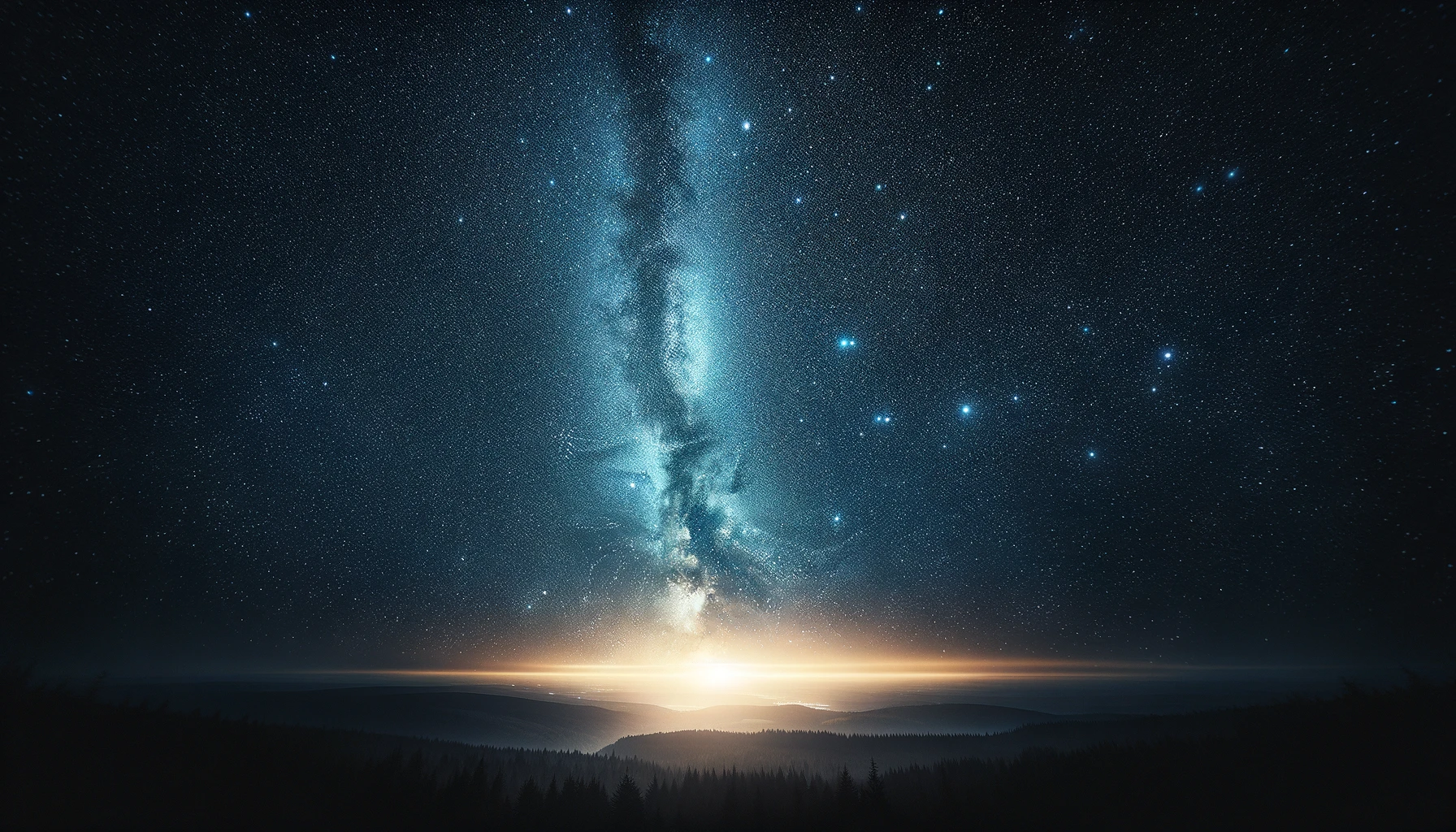Gazing upon the night sky, we’ve all been captivated by the twinkling tapestry of stars. These distant points of light, though seemingly insignificant, are the very furnaces that forge the elements necessary for life, power the grand dance of galaxies, and hold the key to unlocking the universe’s story.
From their fiery birth within swirling nebulas to their dramatic transformations and ultimate legacies, stars are the dazzling protagonists in the cosmic drama.
In this exploration, we will delve into the captivating world of stars, unraveling the secrets of their birth, evolution, and the profound impact they have on the universe and the potential for life beyond our world.
Stellar Birth: From Dust Clouds to Dazzling Light
Stars, the celestial beacons illuminating the night sky, aren’t born in isolation. Their journey begins within vast, swirling clouds of gas and dust known as nebulae. These nebulas, primarily composed of hydrogen and helium, are the nurseries where future stars take shape. Imagine a vast cosmic cloud, tranquil yet harboring the potential for immense change. Within these nebulas, gravity plays a pivotal role. As denser regions within the cloud attract surrounding material through their gravitational pull, they begin to collapse. This collapse triggers a domino effect, drawing in more and more material, intensifying the gravitational influence.
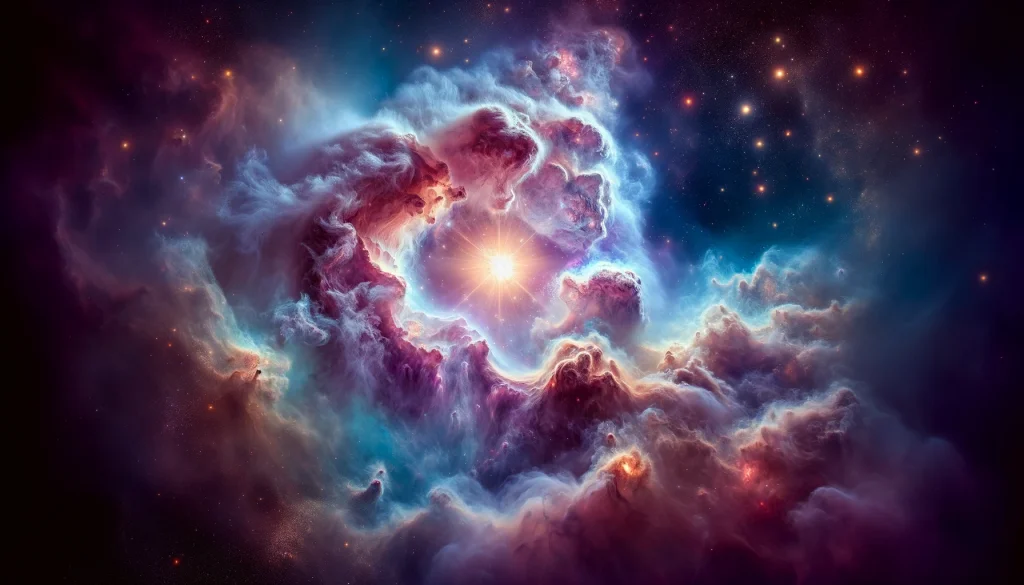
The Birthplace Heats Up:
As the collapsing material condenses, it also heats up significantly. This internal heating is a consequence of the increasing pressure within the collapsing core. Imagine squeezing a ball of gas – the tighter you squeeze, the warmer it gets. In the collapsing nebula, the same principle applies, but on a cosmic scale. This hot, dense core of the collapsing region is called a protostar – a star in its earliest, most formative stage. The protostar continues to gather material and heat up, on the verge of igniting the nuclear fusion that will mark its true birth as a star.
The Ignition Spark: A Star is Born
The journey from a swirling nebula to a luminous star hinges on a remarkable process called nuclear fusion. Deep within the heart of the protostar, under immense pressure and temperature, hydrogen atoms are no longer content to exist as isolated entities. The intense heat provides the energy needed for these hydrogen atoms to overcome their natural repulsion and fuse together. In this fusion process, two hydrogen atoms combine to form a single helium atom, releasing a tremendous amount of energy in the process.

This release of energy acts as a counterbalance to the inward pull of gravity. Imagine a cosmic tug-of-war – on one side, gravity relentlessly tries to collapse the star further, while on the other, the outward pressure generated by nuclear fusion pushes back. When these opposing forces reach a state of equilibrium, a crucial point is reached. The star has achieved hydrostatic equilibrium, a delicate balance between gravity and the outward pressure from nuclear fusion. This balance is essential for the star’s long-term stability and marks its official birth as a luminous giant on the main sequence. The protostar has shed its cocoon and transformed into a dazzling star, ready to embark on its journey through the vast expanse of the universe.
The Stellar Cradle: From Cocoon to Cosmic Beacon
Even after igniting its internal furnace, a newborn star isn’t quite ready to shine in all its glory. The surrounding nebula, the star’s celestial cradle, continues to play a crucial role in its early development. Imagine a hungry infant – the young star feeds on the infalling gas and dust from the nebula, gathering the necessary material to fuel its ongoing nuclear fusion and promote further growth. This infall of material is like a cosmic feeding frenzy, allowing the star to increase its mass and luminosity.
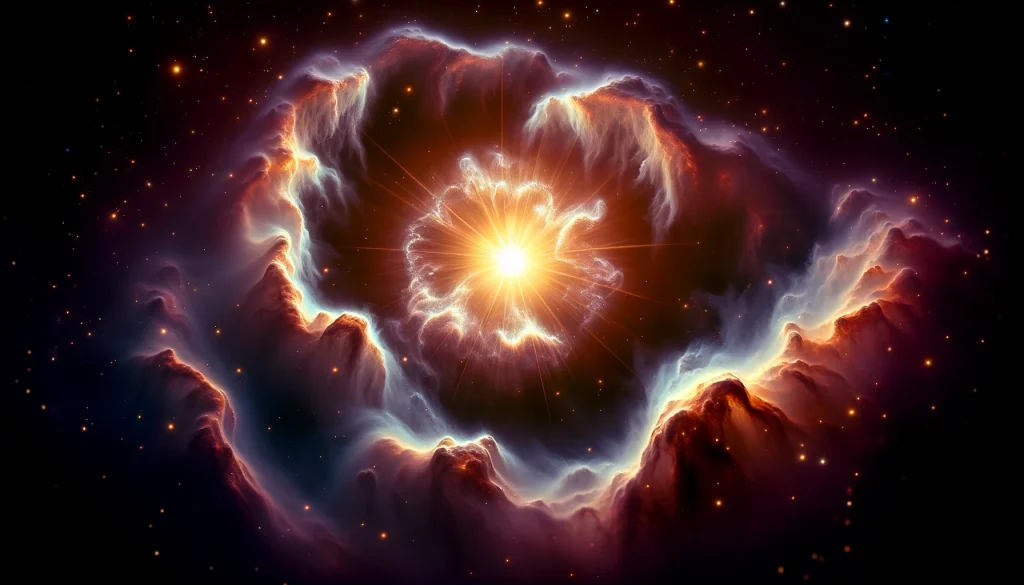
Emerging from the Dust:
However, this nurturing environment isn’t permanent. Over time, the gravitational pull of the star itself, combined with the outward pressure from its internal fusion processes, begins to push back against the surrounding material. Gradually, the nebula thins out, with the gas and dust dispersing back into the interstellar medium. As this surrounding material dissipates, the newborn star is finally revealed in all its brilliance, a dazzling beacon radiating light and warmth into the vast cosmic ocean. The star’s journey on the main sequence has begun, and it will continue to shine for millions or even billions of years, a testament to the power of gravity, nuclear fusion, and the celestial dance of stellar birth.
Unveiling the Diverse Stellar Zoo: A Spectrum of Celestial Giants
Stars, despite their outward appearance of twinkling points of light, come in a remarkable variety. This diversity is captured through a system known as stellar classification. Imagine a vast cosmic zoo teeming with stars of all shapes, sizes, and colors. Stellar classification helps us categorize these celestial giants based on two key properties: their temperature and luminosity (brightness).
The Morgan-Keenan (MK) classification system, widely used by astronomers, assigns a letter to each star based on its surface temperature. Hottest stars blaze with a blue or white hue and are classified as O, B, or A stars. Cooler stars, like our Sun, radiate a yellow or orange light and fall under the categories of F, G, or K stars. The coolest stars, appearing red, are classified as M stars. This temperature classification provides a starting point for understanding a star’s basic characteristics.
However, stellar classification doesn’t stop there. Luminosity, a star’s intrinsic brightness, also plays a crucial role. Stars can be vastly different in brightness even within the same temperature class. Here’s where the influence of another key player comes in – stellar mass. Massive stars have a greater gravitational pull, allowing them to fuse hydrogen at a much faster rate, leading to a higher luminosity. The MK system incorporates luminosity through additional designations, such as “V” for main sequence stars, “III” for giants, and “VII” for white dwarfs.
By considering both temperature and luminosity, the MK classification system allows us to categorize stars and understand their properties, paving the way for a deeper exploration of their life cycles and fascinating transformations.
A Spectrum of Stellar Types: Unveiling the Colors and Power of Stars
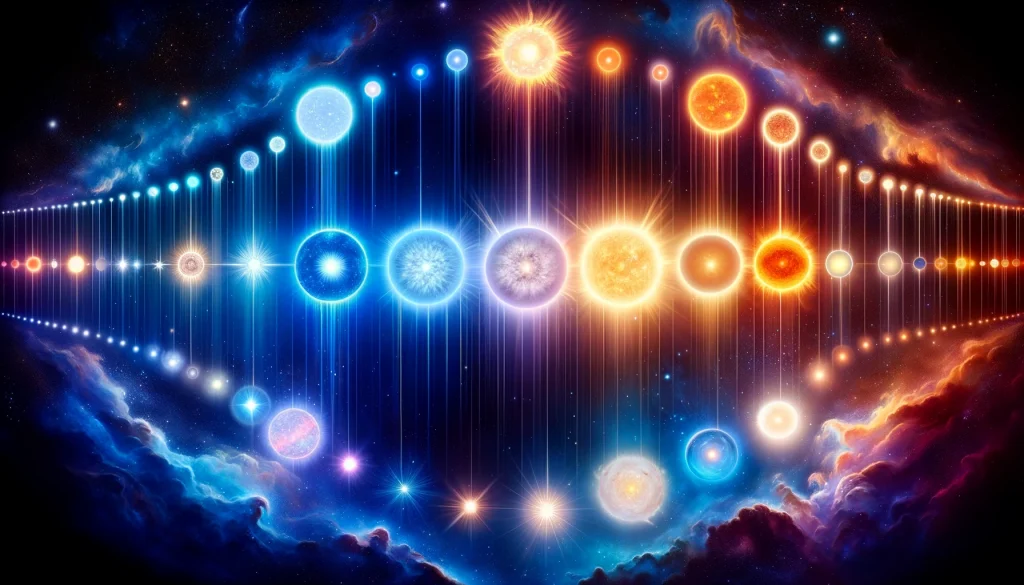
The MK classification system, introduced earlier, categorizes stars based on their temperature and luminosity. Let’s delve into the major stellar types, exploring their characteristics and the celestial light show they put on:
- O Stars: These celestial giants reign supreme in terms of temperature, scorching hot and radiating a brilliant blue or white light. They are incredibly massive and luminous, outshining our Sun by millions of times. However, their fiery brilliance comes at a cost – O stars have relatively short lifespans due to their rapid consumption of fuel.
- B Stars: Blazing with a vibrant blue or white hue, B stars are still immensely hot and luminous, though not quite as extreme as O stars. They are massive and powerful, playing a crucial role in shaping the interstellar medium with their strong winds and eventual supernovae explosions.
- A Stars: These stars radiate a beautiful blue-white light, with temperatures cooler than O and B stars. They are still quite massive and luminous, though less so than their hotter counterparts. A stars like Sirius, the brightest star in our night sky, are shining examples of this class.
- F Stars: Stepping down the temperature ladder, we encounter F stars. They emit a white or yellowish-white light, with a luminosity that can vary depending on their mass. Our Sun falls under this category, a stable yellow dwarf providing warmth and light for our solar system.
- G Stars: Similar to F stars, G stars radiate a yellow or yellow-white light. They encompass a range of luminosities, with our Sun being a prime example. G stars are generally stable and long-lived, providing ideal conditions for the potential development of life around them.
- K Stars: Cooler than F and G stars, K stars emit an orange or orange-red light. They are typically less massive and luminous than our Sun. Many nearby stars, like Alpha Centauri B, belong to this category.
- M Stars: These are the coolest and most common stars in the universe, radiating a faint red light. They are also the least massive and luminous, with some barely larger than Jupiter. Red dwarf stars, like Proxima Centauri, the closest star to our solar system, are prime examples of this class.
By understanding the temperature and luminosity spectrum of these major stellar types, we gain a deeper appreciation for the diverse celestial giants illuminating the universe. From the scorching brilliance of O stars to the faint red glow of M dwarfs, each type plays a vital role in the cosmic dance of stellar evolution.
Beyond Temperature: The Role of Luminosity and Unveiling Stellar Evolution
While temperature paints a vivid picture of a star’s surface characteristics, stellar classification goes a step further by incorporating luminosity, a star’s intrinsic brightness. Imagine two stars with the same surface temperature – they might appear similar in color, but their luminosity can tell a vastly different story. Luminosity is crucial because it is directly linked to a star’s mass and its stage of evolution.
The MK classification system incorporates luminosity through Roman numerals appended to the temperature class. Here’s how these designations help us understand a star’s life cycle:
- Main Sequence Stars (V): These stars, like our Sun, reside on the main sequence – the longest and most stable phase of a star’s life. Main sequence stars are categorized with a “V” following their temperature class (e.g., G2V for our Sun). Their luminosity is directly related to their mass – more massive stars burn brighter and have shorter lifespans on the main sequence.
- Giants (II, III): As stars begin to exhaust their hydrogen fuel in their core, they enter a transformative stage. Their core contracts while the outer layers expand and cool, leading to a dramatic increase in size and a decrease in surface temperature. These stars are classified as giants, designated with “II” for bright giants or “III” for regular giants depending on their luminosity within the class.
- Dwarfs (VI, VII): The term “dwarf” in stellar classification can be misleading. It doesn’t necessarily refer to size but rather to luminosity. Stars like white dwarfs (VI) and red dwarfs (VII) are actually quite small, but their intrinsic brightness is relatively low compared to stars on the main sequence or giants. White dwarfs are the leftover cores of Sun-like stars after they shed their outer layers, while red dwarfs are simply low-mass stars that never reach the high temperatures required to ignite fusion beyond hydrogen.
By understanding the interplay between temperature and luminosity, we can not only classify stars but also gain valuable insights into their evolutionary stage and ultimate fate. The MK classification system serves as a powerful tool for unlocking the secrets of stellar lifecycles, allowing us to trace the journey of these celestial giants from their fiery birth to their spectacular transformations.
Stellar Evolution: A Journey Through Cosmic Transformations
Stars, though seemingly unchanging from our Earthly perspective, undergo a remarkable journey of evolution. Understanding this evolution is key to appreciating the diversity of stars and their influence on the universe. Let’s embark on a voyage through the captivating stages of a star’s life:
The Main Sequence: A Beacon of Stability
After igniting nuclear fusion in their core, stars enter the longest and most stable phase of their existence – the main sequence. Imagine a star shining steadily, a beacon of light and warmth in the vast cosmic ocean. During this stage, the energy released by hydrogen fusion at the star’s core is perfectly balanced by the inward pull of gravity. This delicate balance, known as hydrostatic equilibrium, allows the star to maintain a relatively constant size and temperature for millions or even billions of years.
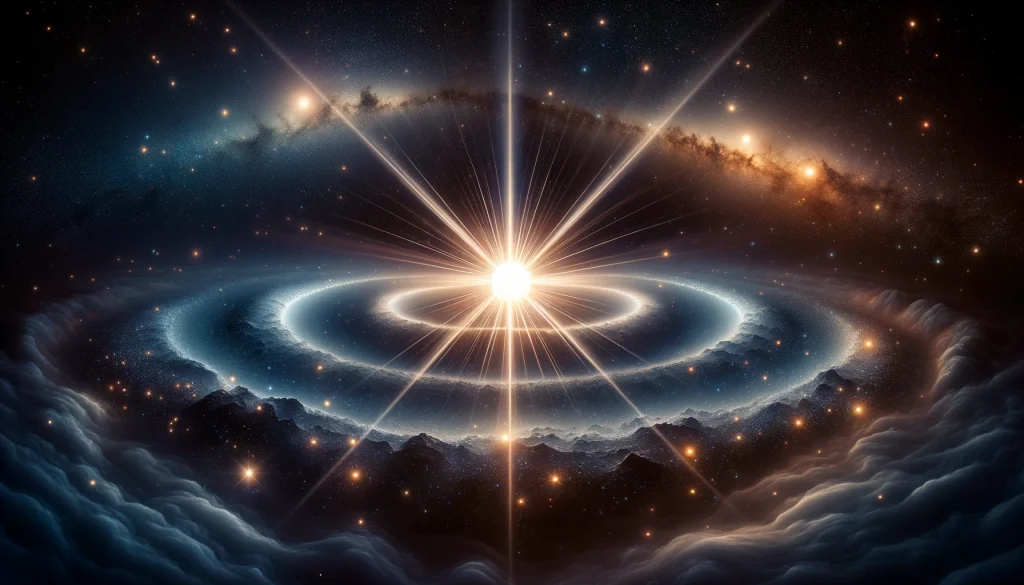
The process fueling this stability is hydrogen fusion. Deep within the core, immense pressure and temperature conditions allow hydrogen atoms to overcome their natural repulsion and combine, forming helium in the process. This fusion reaction releases a tremendous amount of energy, radiating outward and counteracting the gravitational collapse of the star. As long as sufficient hydrogen fuel remains in the core, the star continues to shine brightly on the main sequence. The duration of a star’s stay on the main sequence depends heavily on its mass – more massive stars burn fuel faster and have shorter main sequence lifespans, while stars like our Sun can remain stable for billions of years.
Beyond the Main Sequence: Transformation and Beyond
The main sequence, though a lengthy phase, is not the end of the story for a star. As the star consumes its fuel, a dramatic transformation awaits. Here’s where the concept of stellar evolution truly comes into play. This fascinating process, driven by the interplay between gravity, nuclear fusion, and a star’s mass, dictates its ultimate fate.
The key factor influencing stellar evolution is a star’s mass. Imagine two stars – one a heavyweight champion and the other a lightweight contender. Their journeys through stellar evolution will be vastly different, with mass acting as the deciding factor in the intensity of nuclear reactions, the rate of fuel consumption, and the dramatic transformations that follow the main sequence.
Massive stars, like heavyweight champions, have a much faster burning rate on the main sequence due to their intense internal pressure and temperature. They also possess a greater reserve of fuel. However, this doesn’t translate to a longer lifespan. Once they exhaust their hydrogen fuel core, they embark on a more explosive and dramatic path towards their demise.
In contrast, lower-mass stars, like our Sun, burn fuel at a more measured pace, leading to a longer stay on the main sequence. But even these stars are not immune to change. As we will explore further, their evolution, while less explosive, will still lead to fascinating transformations and the creation of celestial wonders.
Different Evolutionary Paths for Different Masses: A Universe of Stellar Endings
As stars depart from the stability of the main sequence, their journeys diverge based on their initial mass. Let’s explore the fascinating transformations that await these celestial giants:
Low-Mass Stars (Sun-like):
- Red Giants: Once the hydrogen fuel in the core is depleted, a low-mass star like our Sun undergoes a dramatic transformation. The core contracts, triggering a rise in temperature and pressure. In response, the outer layers of the star expand and cool, giving it a reddish hue and the classification of a red giant. Interestingly, during this red giant phase, the star can initiate a brief period of helium fusion in a shell surrounding the core, further extending its lifespan.
- Planetary Nebulae: As the red giant continues to lose mass through powerful stellar winds, its outer shell is ejected into the interstellar medium, forming a beautiful and colorful planetary nebula. The remaining core, exposed and hot, becomes a white dwarf – a small, incredibly dense star shining with a faint white light.
- White Dwarfs: The white dwarf represents the final stage for low-mass stars. It is a hot, compact ember slowly cooling over billions of years. Eventually, it will fade into a black dwarf, a cold and dormant ember in the vast expanse of space.
Medium-Mass Stars:
Stars with a mass 2-8 times that of our Sun follow a similar path initially, becoming red giants. However, their greater mass allows them to reach higher core temperatures, enabling them to fuse elements heavier than helium for a brief period. This additional fuel source leads to a more dramatic ending:
- Supernovae: When the core can no longer sustain fusion, a violent explosion known as a supernova occurs. This colossal event blasts the star’s outer layers into space, enriching the interstellar medium with heavier elements and potentially triggering the formation of new stars and planetary systems.
- Neutron Stars: The leftover core of a medium-mass star after the supernova collapses under its own immense gravity, forming an incredibly dense object known as a neutron star. Here, protons and electrons are crushed together into neutrons, resulting in a sphere with a mass exceeding our Sun but packed into a city-sized diameter.
Massive Stars:
The most dramatic stellar finales belong to the heavyweights – stars with masses exceeding 8 times that of our Sun. Their immense gravity and burning rate lead to a rapid consumption of fuel and a spectacularly violent ending:
- Supernovae: Similar to medium-mass stars, massive stars also culminate in a spectacular supernova explosion. However, the sheer power of these explosions is unmatched, releasing tremendous amounts of energy and heavy elements.
- Neutron Stars or Black Holes: The fate of the core after the supernova depends on its remaining mass. If the mass is less than about 3 times the Sun’s mass, the immense pressure condenses it into a super-dense neutron star. However, if the core’s mass exceeds this limit, not even the outward pressure of degenerate neutrons can withstand gravity’s pull. The result is the formation of a black hole, a region of spacetime with such intense gravity that not even light can escape its grasp.
These are just some of the captivating transformations that await stars of different masses. Each path contributes to the ongoing evolution of the universe, enriching the interstellar medium with the building blocks for future generations of stars and potentially harboring the conditions for life to arise.
The Stellar Legacy: Seeds of Life Scattered Across the Cosmos
Stars, beyond their dazzling brilliance, play a critical role in shaping the universe and fostering the potential for life. The journey doesn’t end with their dramatic transformations. Even in their demise, stars leave a profound legacy that continues to influence the grand cosmic narrative.
Enriching the Universe’s Toolkit:
The universe began primarily with hydrogen and helium, the lightest elements. It’s through the stellar furnace that heavier elements, essential for life as we know it, are forged. Stars, throughout their lifespan, contribute to this enrichment process in two key ways:
- Stellar Winds: As stars, particularly massive ones, burn fuel and evolve, they expel a constant stream of charged particles into the interstellar medium. These powerful stellar winds carry trace amounts of heavier elements created within the star, slowly dispersing them throughout the galaxy.
- Supernovae Fireworks: The most dramatic enrichment event occurs during a supernova explosion. The colossal detonation of a massive star scatters a vast amount of material, including the heavier elements forged in its core, into the interstellar medium. These supernovae “fireworks” act as a cosmic foundry, seeding the universe with the essential ingredients for future generations of stars and planetary systems.
The Building Blocks of Life:
The elements heavier than hydrogen and helium are often referred to as “metals” in astronomy, although they may not necessarily resemble the metals we find on Earth. These elements, including carbon, oxygen, nitrogen, and iron, are the building blocks of life as we know it. They form the complex molecules necessary for biological processes and are the very foundation of planets, moons, and potentially life-harboring environments.
A Universe Enriched:
Stars, through their stellar winds and supernovae explosions, have transformed the once-primordial universe into a rich tapestry of elements. This enrichment process is a testament to the interconnectedness of the cosmos. The ashes of one generation of stars become the cradle for the next, providing the essential ingredients for the potential emergence of life on newly formed planets. As we explore the universe, understanding stellar evolution and the legacy of stars becomes even more crucial, for it sheds light on the very origins of our own existence and the potential for life beyond our world.
Conclusion: Stars – The Dazzling Engines of the Cosmos
Our celestial journey has unveiled the captivating world of stars. From their fiery birth within swirling nebulas to their dramatic transformations and enduring legacies, stars are the dazzling engines that power the universe. They are the cosmic furnaces that forge the elements necessary for life, illuminate the vast expanse of space, and shape the grand dance of galaxies.
The Pillars of the Universe:
Stars are not just celestial pinpricks of light; they are the fundamental building blocks of the universe. They influence everything from the formation of planets and planetary systems to the ongoing chemical evolution of the cosmos. Understanding stellar evolution sheds light on the very origins of our own existence and the potential for life beyond Earth.
A Universe to Explore:
This exploration has only scratched the surface of the captivating world of stars. Our website offers a wealth of resources to delve deeper into specific topics that pique your interest. Explore interactive simulations that showcase stellar birth and death, delve into articles exploring the diversity of stellar types, or lose yourself in the captivating beauty of stellar phenomena through high-resolution images and videos. Additionally, we provide links to external sources, trustworthy websites, and research institutions to further your exploration.
The universe is a vast and ever-evolving playground for curious minds. Let the wonders of stars ignite your passion for understanding the cosmos. Remember, the more we learn about these celestial giants, the more we unlock the secrets of our own place in the grand cosmic dance. So, continue to explore, ask questions, and let the stars guide you on your journey of astronomical discovery.
